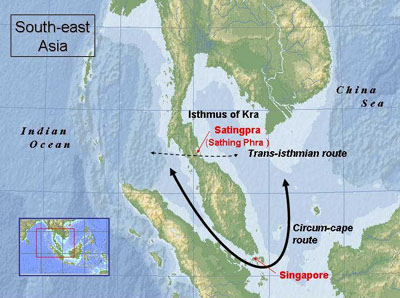Defense News link
China's New Jet, Radar Complicate US Posture
Russian-made Gear Extends Beijing's Punch
TAIPEI — China’s increasing military musculature continues to crush the margins of how far the US military can conduct operations near the mainland, experts say. Through the purchase of Russian-made equipment, China is attempting to break beyond the current air defense range of 250 kilometers in what US experts refer to as China’s anti-access/area-denial strategy.
China plans to procure two new Russian weapon systems that will extend the range of its air defense strike capability to 400 kilometers. This would place all of Taiwan within the scope of China’s air defense network and endanger the Japanese-controlled Senkaku Islands, which China also claims.
The first is the much-reported negotiation for the 400-kilometer range
S-400 surface-to-air missile (SAM) system with a possible deal after 2017, when the Russian manufacturer, Almaz-Antey, fulfills Russian military orders.
The second is the
Sukhoi Su-35S multirole fighter jet. These fighters will not be outfitted with the older Zhuk radar, but with the IRBIS-E radar, said Vasiliy Kashin, a researcher at the Moscow-based Centre for Analysis of Strategies and Technologies.
Built by Tikhomirov NIIP, the 400-kilometer range IRBIS-E multimode X-Band passive electronically scanned array radar can detect and track up to 30 airborne targets and attack up to eight at the same time, according to the company’s website. In addition, in the air-to-ground mode, it can track up to four ground targets, and can track one ground target while preserving air sector surveillance.
The S-400 and Su-35S with the IRBIS-E radar might become “a psychological deterrent to politicians in Washington when they contemplate a Taiwan contingency,” said Alexander Huang, a military specialist at Tamkang University, here.
Kashin said the tactical situation is “bad news for Taiwan,” as the Su-35S will be able to spot Taiwan’s F-16 fighters at 400 kilometers with its new radar. “That means Chinese Su-35s patrolling on the mainland side of the border will be able to see the targets all over Taiwan.”
If anything, these systems will “inspire determination to expedite production, procurement and deployment of the [Lockheed Martin] F-35 fighter by the US and its Asian allies,” Huang said.
The latest information on the Su-35S deal was revealed on June 10, when the director general of Russian Technologies Co., Sergey Chemezov, said the final commercial contract on the fighter sale could be expected by the end of this year.
Kashin said the “contract likely will be signed at the next meeting of the Sino-Russian intergovernmental commission on military technical cooperation, which can be expected to take place in November in Moscow.”
The first procurement contract is expected to include
24 Su-35S fighters, with an option for an additional 24 as things progress. Though 24 to 48 fighters are not a significant threat to US forces,
they pose a problem for Taiwan as it retires 56 Mirage 2000 fighters and roughly 50 F-5s.
Taiwan is upgrading 126 indigenous defense fighters and 145 F-16A/B fighters, but there has been a significant push by Taiwan to procure 66 F-16C/D fighters to counter reductions. Effective lobbying by China within the US government has blocked new F-16 sales to Taiwan.
With projected reductions in fighters,
Taiwan’s military has begun fielding its first land-attack cruise missile, the Hsiung Feng 2E, and is working on a variety of new anti-ship cruise missiles.
However, Douglas Barrie, senior fellow for military aerospace at the London-based International Institute of Strategic Studies, said Taiwan’s growing interest in land-attack cruise missiles could be countered by the Su-35’s “potential ability to detect small low-flying targets at ranges suitable to support an engagement.”
The IRBIS system’s 400-kilometer range “could provide a useful gap filler” to support the Chinese air force’s limited number of airborne warning and control system aircraft (AWACS), Barrie said. “It remains to become clear what, if any, long-range air-to-air missile might be supplied with the Su-35.”
Both the S-400 and Su-35S with IRBIS-E radar are “impressive steps in increasing capability,” said Lance Gatling of Nexial Research, a defense consulting firm in Tokyo. However, there are technical challenges to integrating China’s AWACS capability with the S-400 and IRBIS-E. “SAM radars, ground-based, have the radar horizon issue, so they can’t see planes at very low altitude over Taipei.”
Taiwan could use the jamming capabilities of its new early warning radar at Leshan Mountain, near Hsinchu, to play havoc with China’s various radar systems, said a Taiwan defense industry source. The Leshan facility is considered one of the most powerful radars in the world, and unconfirmed sources here indicate it relays data directly to the US military to allow for the monitoring of aircraft and missile activity within China.
Gatling said the ultimate question on China’s procurement of the IRBIS and S-400 systems is: “How advanced is the integrated air defense system, data management and data links” in China? At present, this is difficult to define, as much of China’s military capabilities remain opaque to outsiders.










